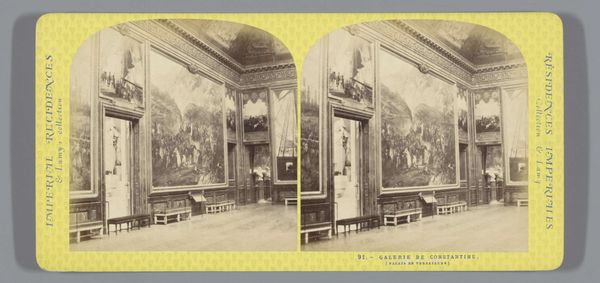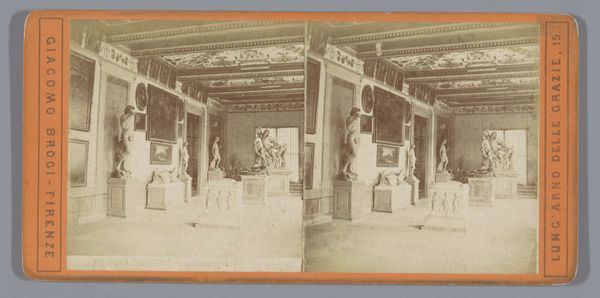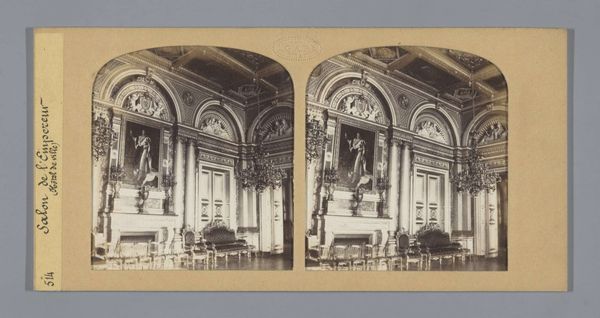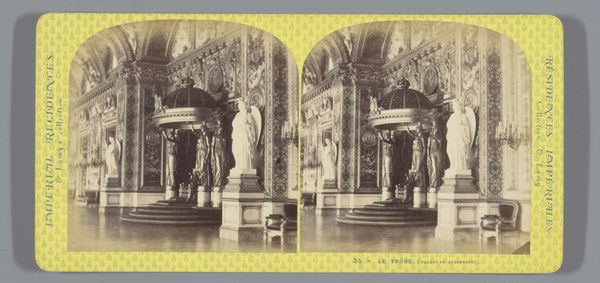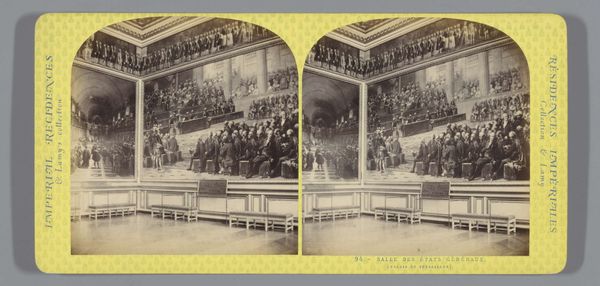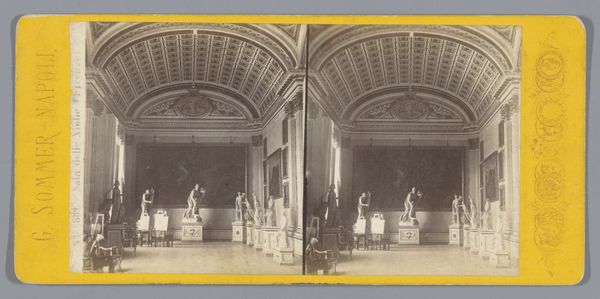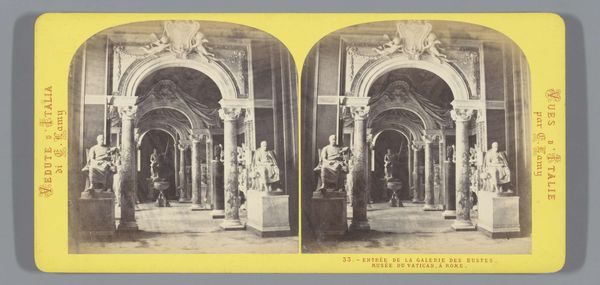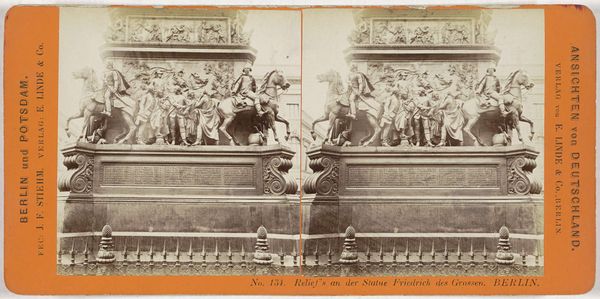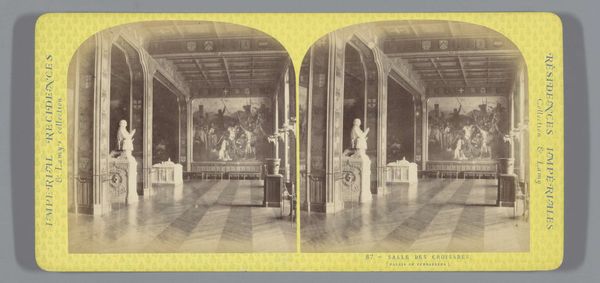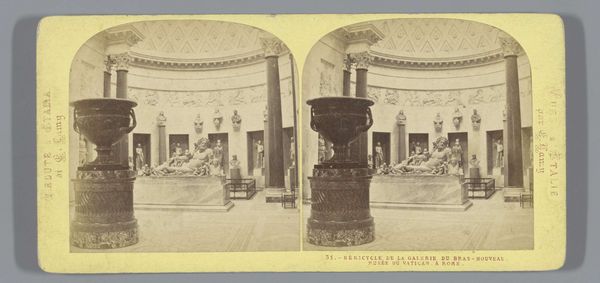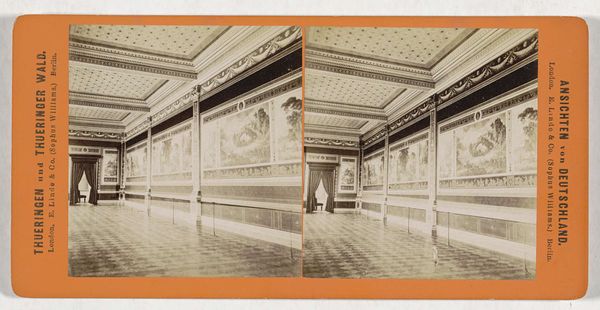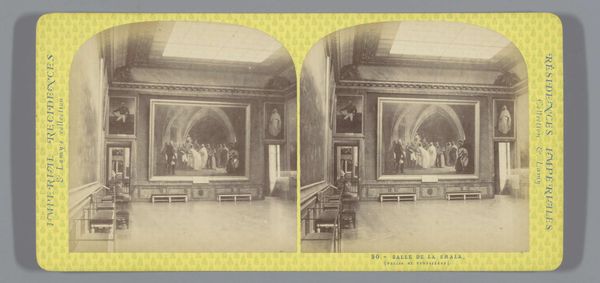
Schilderijen van de slag bij Wagram en Friedland in het paleis van Versailles c. 1860 - 1880
0:00
0:00
print, photography, gelatin-silver-print
# print
#
landscape
#
photography
#
gelatin-silver-print
#
history-painting
#
realism
Dimensions: height 85 mm, width 170 mm
Copyright: Rijks Museum: Open Domain
Editor: This gelatin silver print, dating back to around 1860-1880, captures Ernest Eléonor Pierre Lamy’s photograph of paintings depicting the battles of Wagram and Friedland within the Palace of Versailles. The architecture dominates the image, making the large battle paintings seem small in comparison. What formal qualities stand out to you? Curator: The most striking aspect of this image is the layering of representational space. We have the photograph itself, its two-dimensional surface punctuated by the receding lines of the palace architecture that frames paintings of historical battles. This creates a complex interplay between reality and representation. Note how the photographer positions us to emphasize the picture plane itself. Editor: The photograph becomes as much the subject as the paintings it depicts. Does the monochrome tonality further abstract the representation of the artworks? Curator: Precisely. The restricted palette homogenizes the visual information, reducing the paintings to mere textures within the architectural setting. This pushes us to consider the photograph’s composition and surface, more than the depicted battle scene. The artist redirects us from interpreting subject matter to understanding structural dynamics of visual representation itself. Observe the geometric patterns, the framing and balanced arrangements; this emphasizes an artistic interpretation of space over merely recording information. Editor: That’s a fascinating way to look at it. I hadn’t considered the emphasis on surface and structure before, but it really reframes the image. Curator: Understanding the photographer's compositional choices and how they play with depth is key. By manipulating these elements, the artist transforms the depiction of these historical paintings, which were made to instill patriotism in their time, into a reflection on visual encoding. Editor: I learned to look beyond subject to examine how layers, framing, and monochrome tones guide our understanding of visual representation.
Comments
No comments
Be the first to comment and join the conversation on the ultimate creative platform.
